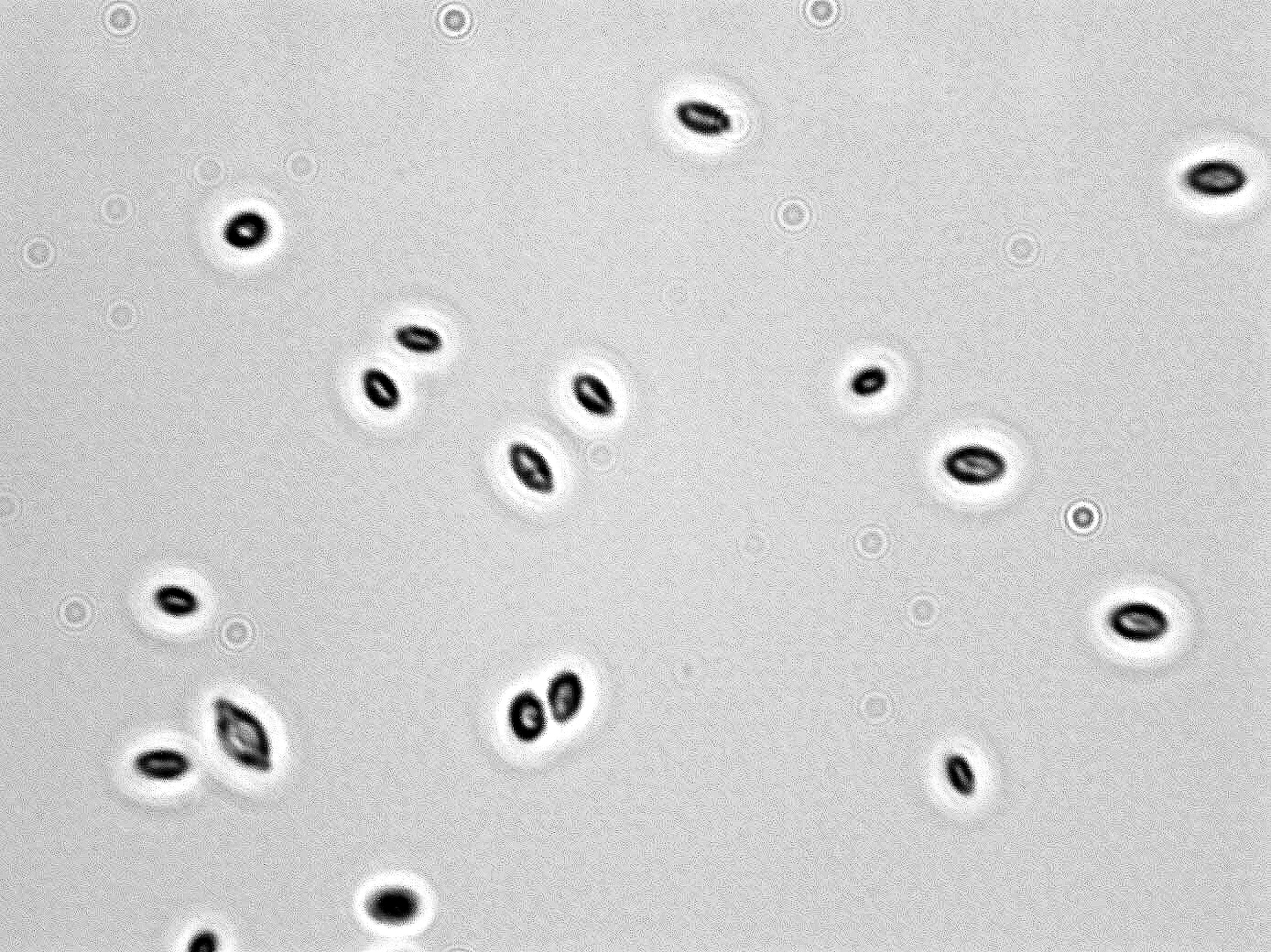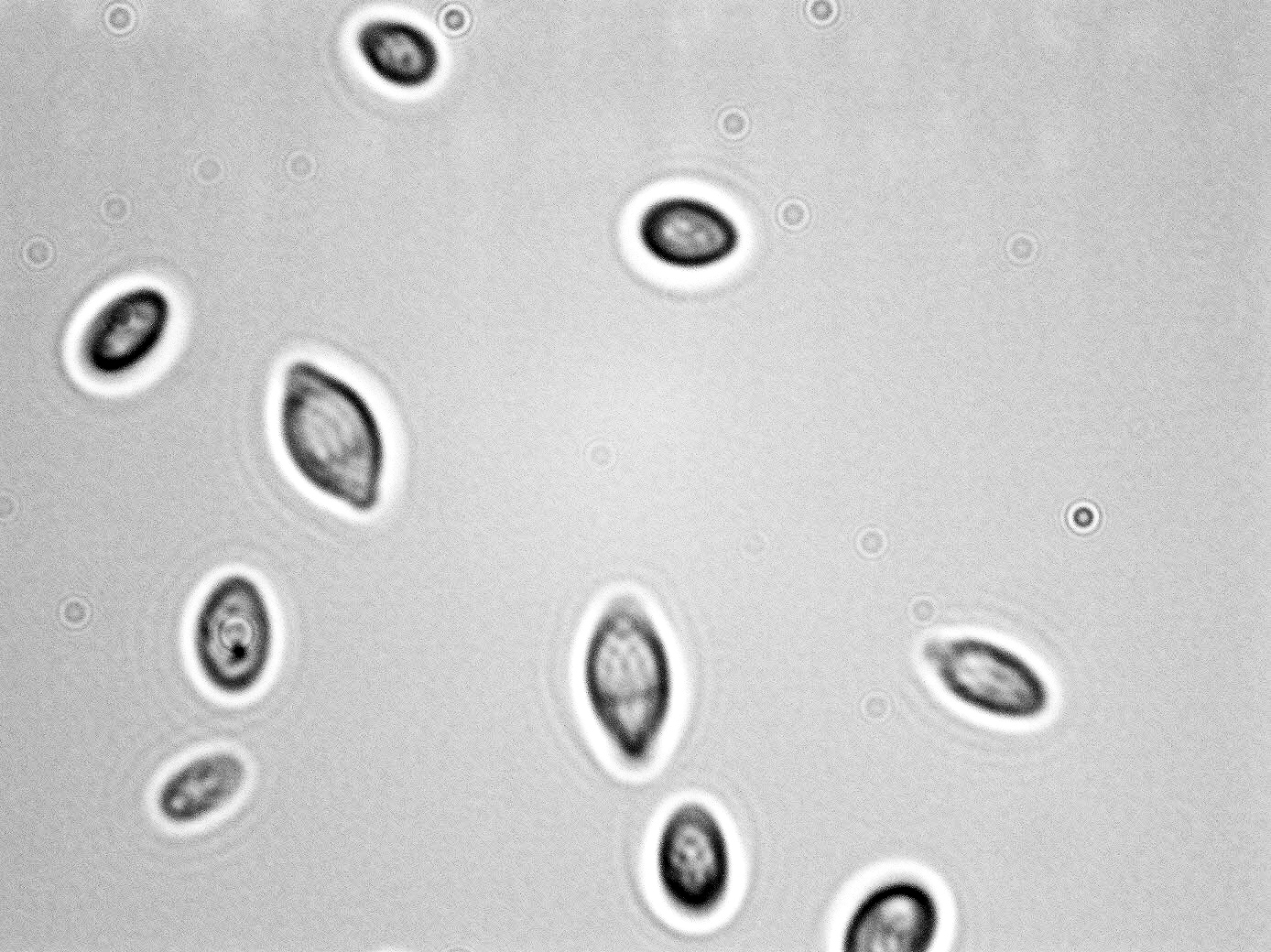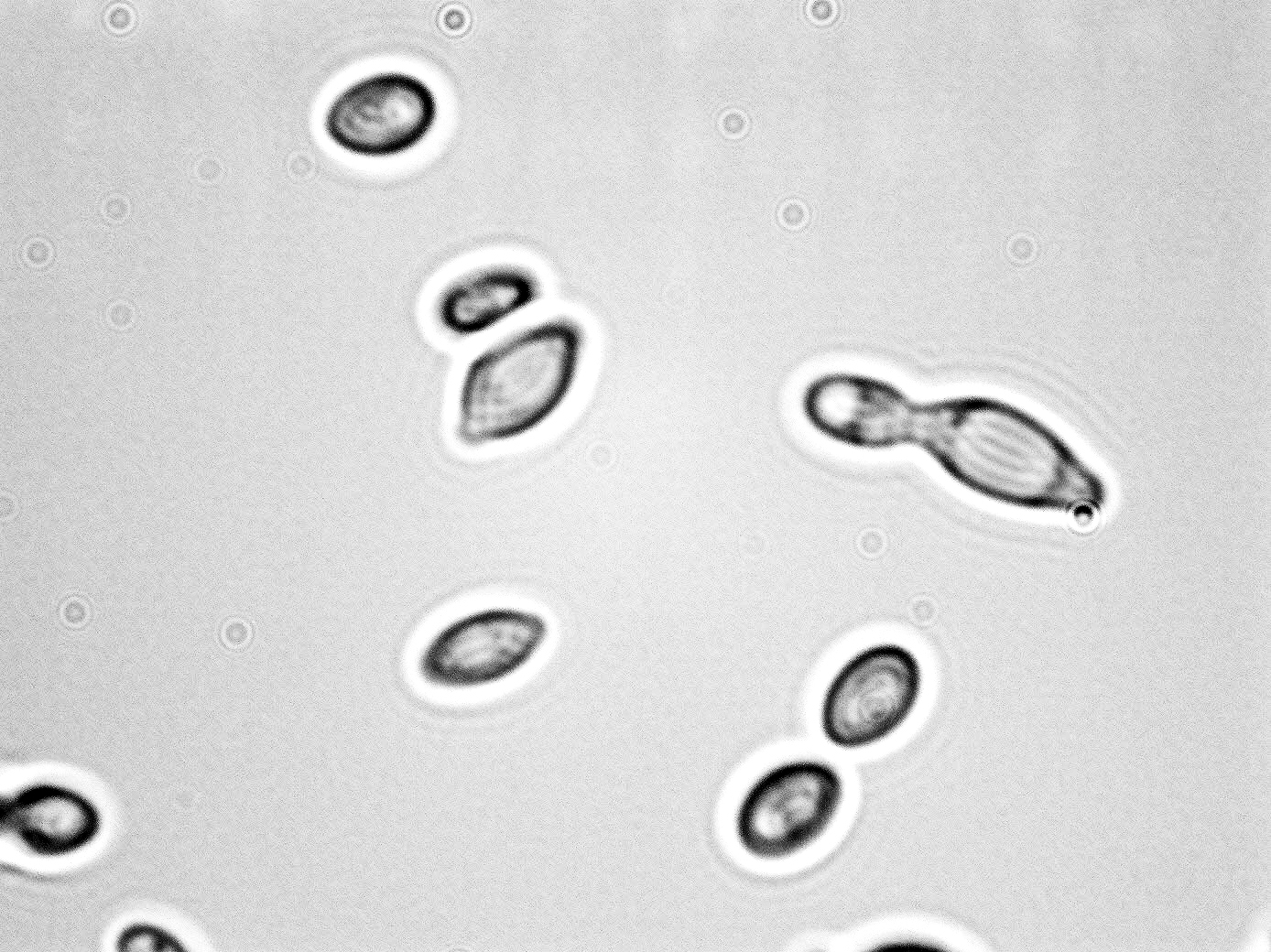Genus/species (aliases): Hanseniaspora uvarum (Kloeckera appiculata anamorph; Kloeckera austriaca, Kloeckera brevis, Kloeckera lodderi, Hanseniaspora apiculata)
Classification: Ascomycete; teleomorph
Morphology:
- Cell: Reproduces by budding; apiculate, spheroidal to ovoidal, elongate, (1.5-5.0)x(2.5-11.5)µm, and single or in pairs.
- Colony: Glucose-yeast extract-peptone agar after one month at 25°C: white to creamy, smooth, glossy, and slightly raised at the center.
- Spore: Saturn to helmet-shaped with a convex base and have an equatorial or subequatorial ledge, sometimes warty.
- Zygote: Apiculate, spheroidal to ovoidal, elongate.
- Ascus: One to two ascospores are formed per ascus; asci persistent.
- Liquid Growth: Sediment formed and a very thin ring after one month.
 |
 |
 |
 |
Physiological Traits:
- Fermentation: Glucose
- Assimilation: Cellobiose; variable use of: Salicin, Arbutin, D-glucono-1,5-lactone, 2-keto-D-gluconate, Ethanol; No assimilation of nitrate; uses ethylamine, L-Lysine, cadaverine as sole N source, some strains weakly; no growth in vitamin-free medium, requires imositiol, pantothenate, pyroxidine and niacin; some strains also require biotin and thiamin;
- Growth: 35 and 37 C: variable
- Growth sensitivities: grows on 0.01% cycloheximide, some strains grow on 0.1% cycloheximide
Ecological Traits:
Found on fruit, particularly grapes, but also found in soil, fresh and salt water, mollusks, mammals.
Distinguishing Features:
Apiculate growth due to terminal budding, high DMDC tolerance
Role in wine:
Normal grape/fermentation flora – present early in the fermentation and produces ethyl acetate, normally Saccharomyces cerevisiae takes over by ~4% ethanol.
Sensitivities:
- SO2: 100 mg/L
- Sorbate: 250 mg/L at pH 5.0, no growth at pH 3.0
- DMDC: K. appiculata: 200 mg/L H. uvarum: 400 mg/L
- pH: 1.5-7.5 – K. appiculata more tolerant at low pHs
- Ethanol: H. uvarum: 3.4-6.7% K. appiculata: 9-12.5% temperature dependent
- Anaerobiosis: Ferments glucose to produce glycerol and ethanol
- Heat: Growth: 8°C-36°C. Survives 20 min at 55°C, not 10 min at 60°C
References:
- Delfini, C., P. Gaia, R. Schellino, M. Strano, A Pagliara, S. Ambrò. 2002. Fermentability of grape must after inhibition with dimethyl dicarbonate. J. Agric. Food Chem. 50:5605-5611
- Edwards, C.G. 2005. Illustrated Guide to Microbes and Sediments in Wine, Beer and Juice. WineBugs LLC, Pullman, WA, USA
- Kurtzman, C.P. and J.W. Fell. 1998. The Yeasts, a Taxonomic Study, 4th Edition. Elsevier
- Ribéreau-Gayon, P., D. Dubourdieu, B. Donèche, A. Lonvaud. 2006. Handbook of Enology Volume 1: The Microbiology of Wine and Vinifications. John Wiley & Sons, Ltd
- Venturin, C., H. Boze, G. Moulin, P. Galzy. 1995. Glucose Metabolism, Enzymic Analysis and Product Formation in Chemostat Culture of Hanseniaspora uvarum. Yeast. 11: 327-336
